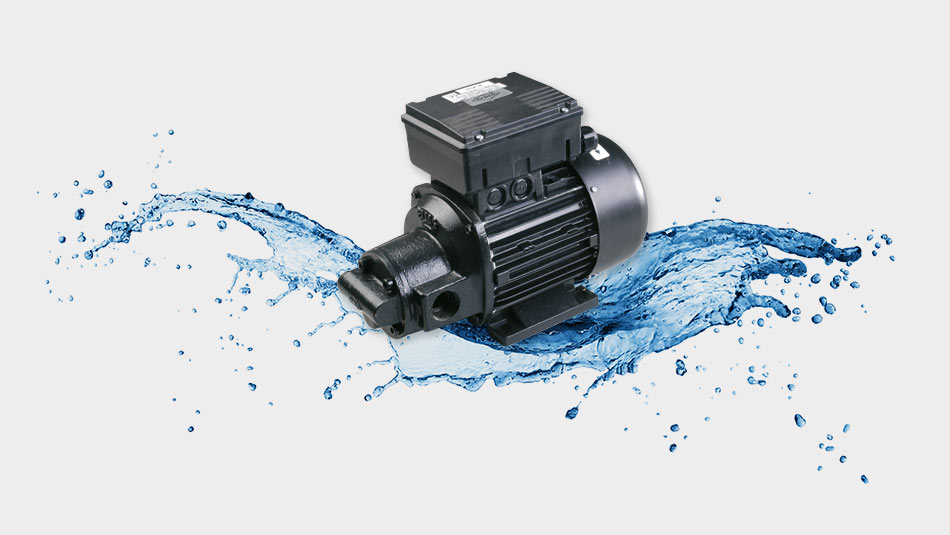What is the operating principle of a displacement pump?

Recommendations on the operating principle of a displacement pump
The basic principle of a hydraulic pump is to circulate a fluid to enable its discharge. This involves pumping a constant volume of liquid to evacuate or distribute it. The main characteristics of a displacement pump are to suck in all types of fluids and to provide good performance even at low flow rates.
How does this system work? What are their advantages? What types of displacement pumps are available? We give you all the answers.
Need advice?
Our team of experts is here to help you.
You can contact us via a simple click:
What is a displacement pump?
The particularity of displacement pumps is that they consist of mobile elements inserted into a fixed part. When the motor is started, these parts move, creating a partial vacuum. Under atmospheric pressure, the liquid contained in the tank is pushed into this space, where it is trapped. The movement of the parts then reduces this space and places the fluid under pressure. Driven by the rotation speed, the fluid is pushed to the pump outlet.
The operating principle of a displacement pump thus depends on variations of volume that enable the displacement of a liquid. In other words, within a given time, the pump draws a quantity of the liquid. This is sucked into the mechanism and then transferred thanks to the discharge pressure. This is why they are also called "positive displacement pumps" in patent databases.
The flow rate of a displacement pump depends on its rotation speed as well as the number of cycles and the size (volume) of its chambers.
What are the advantages of this type of system?
Self-priming pumps
The displacement pump automatically facilitates pump priming and thus starting. This is a major difference with centrifugal pumps, which are generally not self-priming and which require installation with a valve or a check valve, to suck in the fluid with no need to create a vacuum or to be pre-filled.
An ideal pump for fragile fluids
These hydraulic pumps are often used for the transfer of homogeneous liquids: thick liquids, pasty liquids, etc. It is important to understand that the viscosity of the fluid improves the performance of this type of pump. Moreover, it is easy to very precisely adjust its flow rate.
A very high-performance pump
A variation system enables the fluid flow to be modulated. Thus, it can be made to run very fast or very slowly, depending on the viscosity of the fluid.
What are the different types of displacement pumps?
There is a wide range of displacement pumps. We can differentiate between two main types of operation: the reciprocating or oscillating pump and the rotary pump.
Oscillating pumps
Their particularity is to create a cyclical movement of rectilinear displacement, i.e. a linear movement in a single direction.
Among these types of hydraulic pump are the piston pump and the diaphragm pump. To create a partial vacuum, the piston moves backwards or the diaphragm is depressed. The suction nozzle valve opens, allowing the fluid to be drawn into the space created. The piston then moves forward or the diaphragm moves upwards. The space is reduced and pressure increases, forcing the liquid to move. It is then the turn of the discharge valve to open to allow the evacuation of the pumped liquid.
The manual pump, also called hand pump, is a type of piston pump. This mechanical pump is generally used to pump water from a borehole or well.
Rotary pumps
As their name implies, they operate by rotation.
- Internal gear pumps possess two outer toothed cogs that rotate in opposite directions.
- The external gear pump possesses an internally toothed cog and an outer toothed cog, which rotate in the same direction. The fluid is drawn in when the two cogs are disengaged and is discharged when they are re-engaged.
- Vane pumps have a rotor equipped with rectangular vanes or blades that rotate tangentially in the pump casing. Different models exist: the impeller pump, ideal to recover dense fluids or to pump food products, the fixed or variable cylinder pump, the eccentric rotor pump, etc.
- Peristaltic pumps consist of a tube in which the fluid is drawn by pinching a flexible hose. With this type of model, the liquid is never in contact with the rotor. That is why they are often used to discharge corrosive and chemical products, as well as sterile or medical liquids.
- Lobe pumps have the particularity of possessing two rotors assembled as gears that rotate without touching each other. As they enable the transfer of fluids without damaging them, they are preferred for food or pharmaceutical liquids.
Thanks to the wide range of models, hydraulic displacement pumps are suitable for the vast majority of fluids. They are chosen according to your requirements in order to obtain the best performance and good value for money.
